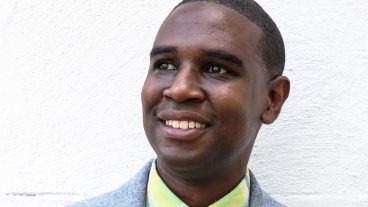To return to the office, or not to return to the office — that is the question facing many leaders today. While some leaders are relieved at the reduction of COVID restrictions and excited to get their team back to the office, they may be facing some resistance from their employees who do not feel the same.
The convenience of working from home and the elimination of the commute is something that many employees are not eager to give up. There isn’t a one-size-fits-all approach for organizations to navigate their post-pandemic reality, says leadership development and teambuilding expert Tim Arnold.
When determining what this should look like for your organization, Tim continues, strive for workplace policies and practices that will allow your team to be stronger today more than ever. How do you do this? It’s about finding and managing the “healthy tension” that lies between freedom and responsibility.
What is a “Healthy Tension”
Leaders and teams today are often in a tug-of-war, facing competing demands or tensions within the workplace, such as planning vs. action, structure vs. flexibility, change vs. stability, and work vs. home. The problem, Tim says, is that too many leaders assume these situations are solvable. Great leaders understand that these are not problems to solve, but tensions to manage.
As a consultant, Tim has spent two decades working with organizations and leaders to help them learn how to effectively manage these tensions in order to unite teams, spark change, and get results. It starts with leaders moving beyond the traditional “either/or” approach to solving problems and embracing the transformational power of “both/and” thinking.
Leading with “and” forces leaders to slow down, help others realize you’re not against them, and build a bridge within conversations instead of a wall. Learning how to manage the healthy tensions that exist within life and work is the secret to building resilience and getting results in a polarized world, Tim says.
The Healthy Tension Between Freedom and Responsibility
Exploring and managing the “healthy tension” that lies between freedom and responsibility is more important now than ever as we transition into a post-pandemic world of work. After working remotely for two years, many employees are not going to jump at the chance to return to the office full- or part-time unless there is a solid reason behind this request.
Use this time, Tim says, as an opportunity to remind your team of this critical tension and how it should guide what your new working reality should look like — in-office, remote, and/or hybrid workplaces — in order to achieve your specific organizational and team goals.
Below, Tim breaks down this “tension” for us and where organizations should seek to live within it to thrive in this new world of work.
Here are the positive results of a new normal that embraces freedom:
- Staff stay motivated and engaged
- Work is completed in unique and creative ways
- Shared ownership increases
Here are the negative results that will be experienced if the new normal over-focuses on freedom to the neglect of responsibility:
- Staff become isolated and disconnected
- Negative impact on others is ignored
- Deadlines are missed and balls are dropped
Here are the positive results of a new normal that embraces responsibility:
- Employees over-communicate where they are and what they’re working on
- Staff are deliberately collaborative when making decisions
- Team members are accountable for their commitments
Here are the negative results that will be experienced if the new normal over-focuses on responsibility to the neglect of freedom:
- Staff become frustrated by inflexibility and pointless rules
- Creativity and engagement go down
- Employees’ lack of authority decreases their ownership
Once your team understands this tension, the next step is to assess how well you’re currently managing it. The image below illustrates the four quadrants teams can fall within depending on how well they are able to manage this tension. What quadrant is your team spending the most time in these days?

Ultimately, Tim says, you want to make sure your “back to work” strategy helps your team stay — or move into — quadrant four. By working through this tension together, with the ultimate goal of achieving quadrant four, teams will be more united in how, where, and why they work.
Interested in learning more about Tim Arnold and how he can help your organization thrive in the future of work? Email us at [email protected].




